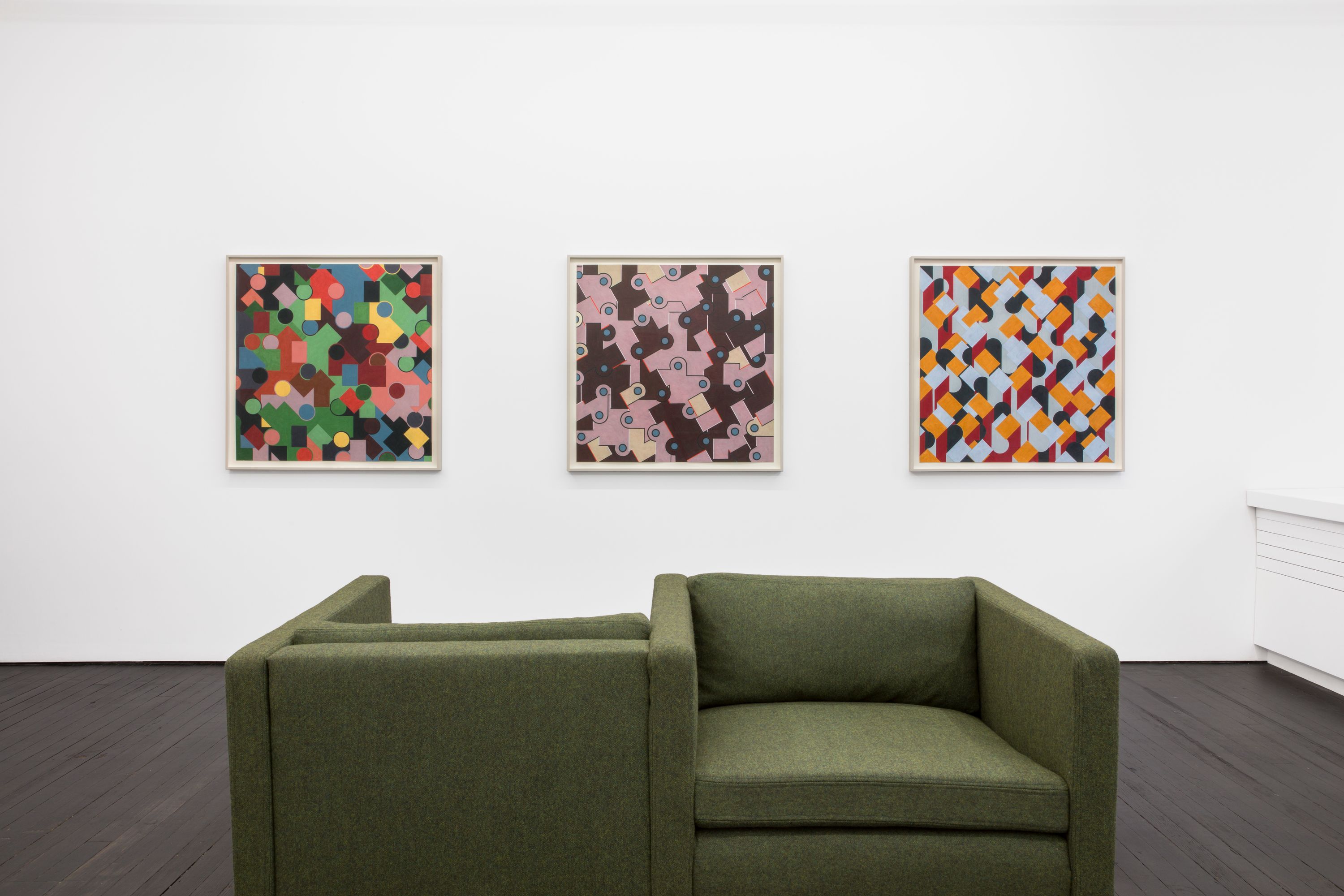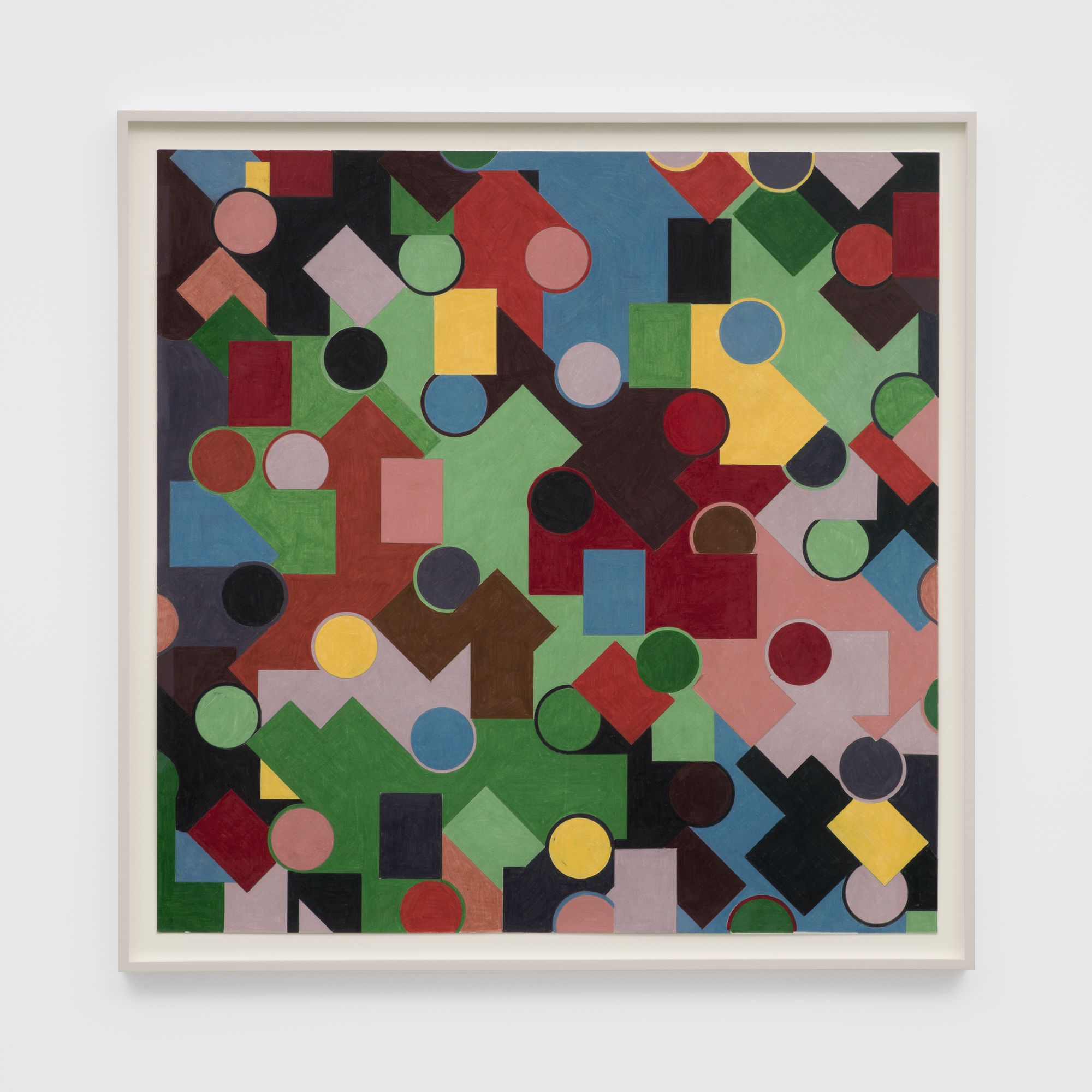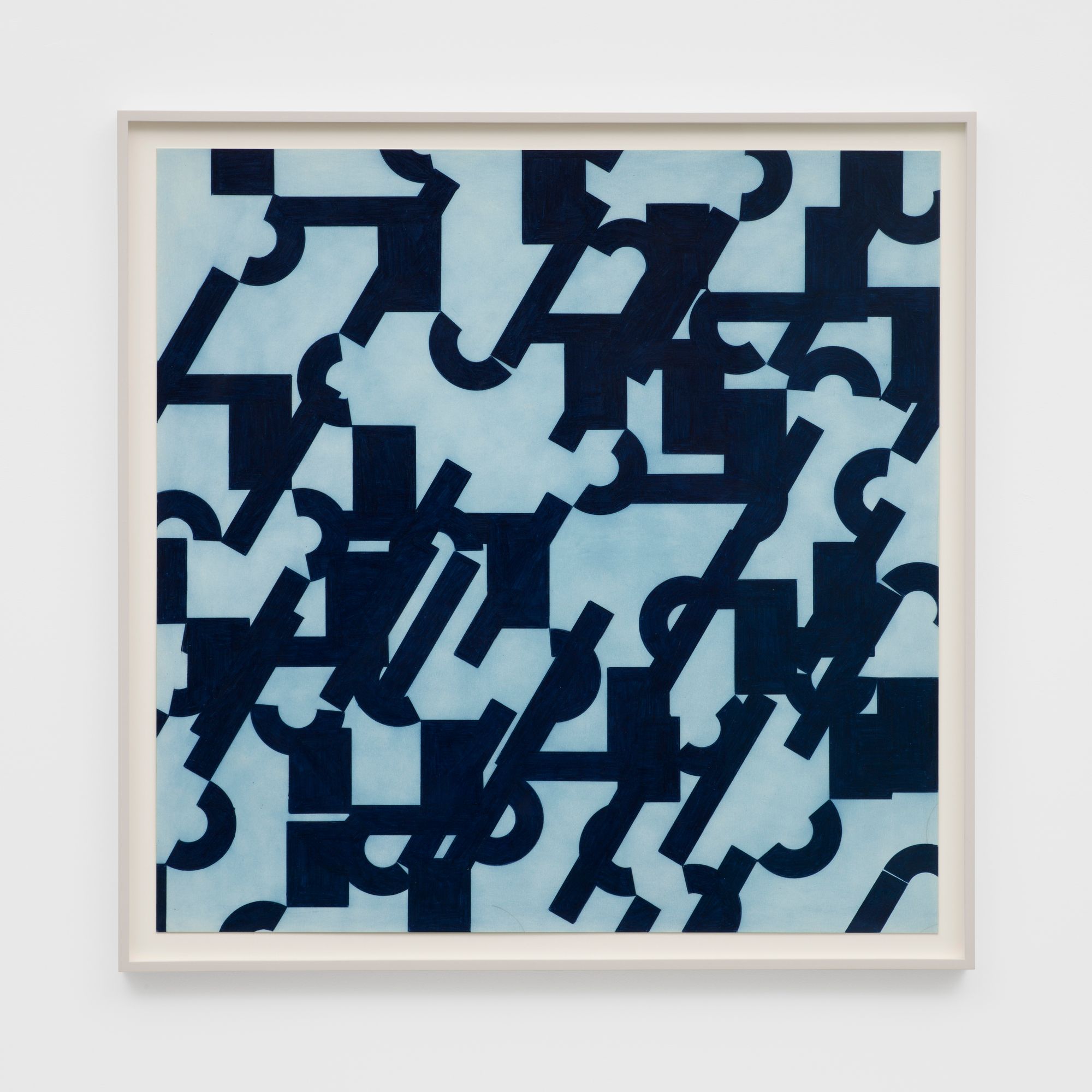
Past
Miles Huston
Verse
Mar. 10–Apr. 21, 2024

Gordon Robichaux is pleased to present two new exhibitions: recent sculpture and paintings by Otis Houston Jr. (Room 925), and an installation of new drawings by Miles Huston (Room 907). The artists have previously collaborated, and although their exhibitions at Gordon Robichaux are distinct, we are excited to honor their long-standing friendship—Huston introduced Houston Jr. to the gallery in 2018—with concurrent shows.
Miles Huston’s second solo exhibition at the gallery is an installation dedicated to his drawing practice, specifically his Verse drawings. For the ongoing series, Huston follows a system of rules to direct his application of marks with colored pencil—arcs, circles, or vertical, horizontal, and diagonal lines—to create complex geometric compositions of infinite, irregular, repeating patterns. He fills the shapes with dense layers of velvety colored pencil over the course of many hours, and the palette for each work is inspired by art and design—in this case, Georges Braque and Miyoko Ito paintings, historical Soviet interiors, and Sanzo Wada’s 1943 book, A Dictionary of Color Combinations (1). Standardized logic and limited parameters yield infinite variations, while optical patterns and color relationships create illusions of space and motion. Up close, the drawings reveal their handmade quality through earnest errors and revisions.
Huston began making Verse drawings in 2009, following his time studying with social ecologist Stephen Kellert at the Yale School of Forestry and Environmental Studies. Kellert “helped pioneer the concept of biophilic design, an emerging field that promotes improved health and wellbeing by creating connections between people and nature in the built environment” (2). These ideas shaped Huston’s interest in “systems thinking as it relates to the environment.” He explains: “The colors and patterns within the drawings are like layers of leaves on a tree, each fixed in its individual location, but also in flux—in growth cycles within an eco-system.”
Huston has conceived of the installation at Gordon Robichaux as a holistic experience: he has installed eight Verse drawings on the walls of the room as well as on two tabletop easels, which he designed to cradle the works in space. In the center of the gallery, the artist placed a modular 1970s Knoll Pfister sofa, which he deconstructed, reupholstered in a painterly green wool Maharam textile, and reconfigured in a tête-à-tête formation, with two sections side-by-side, facing in different directions. The Verse drawings are installed as a low horizon surrounding the sofa—their height calibrated for a seated visitor—creating an immersive space for contemplation and extended viewing.
1. Between 1933 and 1934, Sanzo Wada published six volumes of color studies (Haishoku Soukan) documenting over a thousand color combinations. The books were intended to capture traditional Japanese perceptions of color, which differed from Western approaches, and included a wide range of subtle shades and hues. Wikipedia, s.v., “Sanzo Wada,” last modified June 10, 2022.
2. Kevin Deenehy, “Remembering Stephen Kellert, Who Explored Links Between People and Nature,” Yale School of the Environment, January 5, 2017.
Install (4)




Verse
Uni-verse
multi-verse
meta-verse
omni-verse
trans-verse
di-verse
in-verse
re-verse
con-verse
per-verse
tra-verse
ob-verse
ad-verse
a-verse
sub-verse
contro-verse
ren-verse
neck-verse
autore-verse
—Miles Huston
Works

Verse #1
Colored pencil on Museum Board
31 x 31 inches; 33.75 x 33.75 inches (framed)
2024

Verse #4
Colored pencil on Museum Board
31 x 31 inches; 33.75 x 33.75 inches (framed)
2024

Verse #7
Colored pencil on Museum Board
31 x 31 inches; 33.75 x 33.75 inches (framed)
2024

Verse #2
Colored pencil on Museum Board
31 x 31 inches; 33.75 x 33.75 inches (framed)
2024

Verse #6
Colored pencil on Museum Board
31 x 31 inches; 33.75 x 33.75 inches (framed)
2024

Verse #3
Colored pencil on Museum Board
31 x 31 inches; 33.75 x 33.75 inches (framed)


